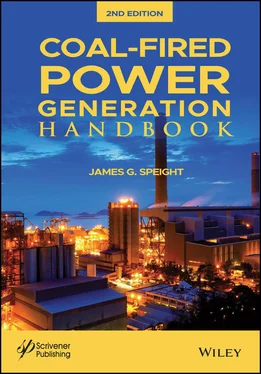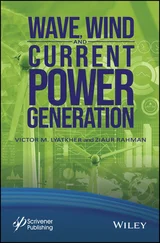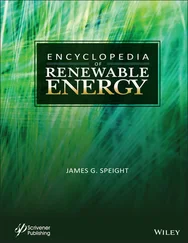Coal has been a vital energy source to human populations for millennia. For example, in approximately 1000 BC, the Chinese relied on coal to smelt copper that served as the basis for their currency, and the Greek philosopher Aristotle made reference to it in his writings when he alluded to a dark charcoal-like rock (World Coal Institute, 2008). Furthermore, the discovery of coal cinders among Roman ruins in England suggests that the Romans relied on coal as a source of energy prior to AD 400.
The first written record of coal in the Americas was taken in 1673 by Louis Joliet who noted carbon de terra while mapping out the Illinois River region. In more recent times, the Nanticoke Indians, a Native American tribe who lived in Pennsylvania, were using local anthracite coal as a source for energy and jewelry during the 1760s (Dublin and Licht, 2005). This energy resource that provided fuel for ancient civilizations is all but history. In the modern world, steam coal, metallurgical coal, and industrial coal all play a vital role in the economy of many countries, especially the United States.
Coal continues to power vital industries. The iron industry still relies on basic oxygen furnaces that require a special type of coal known as metallurgical or coking coal to produce steel. Coke from coking coal is combined with limestone in a furnace where iron ore is blasted with pure oxygen and converted to steel. However, more pertinent to the present text, the electricity that powers electric arc furnaces is usually generated by burning pulverized thermal coal.
Coal was the key energy source for the Industrial Revolution, which has provided amenities that most people in the modern world take for granted – including electricity, new materials (steel, plastics, cement, and fertilizers), fast transportation, and advanced communications. Coal replaced wood combustion because of (i) abundance of coal, (ii) higher volumetric energy density of coal, and (iii) the relative ease of transportation of coal (Ashton, 1969; Freese, 2003).
The Industrial Revolution itself refers to a change from hand and home production to machine and factory. The first Industrial Revolution was important for the inventions of spinning and weaving machines operated by water power which was eventually replaced by steam. This helped increase growth and changed late 18 thcentury society and economy into an urban-industrial state. New fuels such as coal and crude oil were incorporated into new steam engines, which revolutionized many industries including textiles and manufacturing.
The demand for coal decreased for transportation and heating purposes due to intensified competition from crude oil, and activity increased in the post-World War II industrial sector as well as the electricity generation sector after the 1960s. As the demand for power increased, the demand for coal has continued to rise over the years.
The 1973 oil embargo renewed interest in the vast domestic coal reserves of the United States. This sharp rise in coal production helped solve the growing problem of scarce oil resources that were in high demand.
The demand for coal was also impacted by the Power Plant and Industrial Fuel Use Act (FUA) of 1978, which required most oil or natural gas burning power plants to switch to coal. As a result, the energy of the United States became significantly more dependent on coal. After repeal of FUA in 1987, natural gas use in electric power plants increased by 119% between 1988 and 2002. Indeed, the spike in natural gas consumption goes to show the influence the FUA had on increasing US reliance on coal as a source of energy.
As developing countries such as China and India require more energy to meet their rapidly growing demand, competition for coal will continue to increase. The United States has 96% of the coal reserves in North America, which accounts for approximately 26% of the total known coal reserves. As a result, the United States will be expected to export more coal to meet the strong demand from the world market. In doing so, the price of coal will remain stable, and developing countries will be able to meet their energy needs.
Coal is currently responsible for generating approximately 50% of the world electricity. In fact, the demand for coal in the United States is primarily driven by the power sector, which consumes 90% of all domestic coal production. In 1950 however, only 19% of coal was used by the power sector due to its high demand by other sectors such as industry, residential and commercial, metallurgical coke ovens, transportation, and electric power, which all accounted for an amount on the order of 5 to 25% of the total coal consumption at the time. Of the coal produced worldwide, approximately 65% is shipped to electricity producers and 33% to industrial consumers, with most of the remainder going to consumers in the residential and commercial sectors. The total share of total world energy consumption by coal is expected to increase to one-third (approximately 30 to 33%) in 2035, although growth rates of coal consumption are not expected to be even in all countries where coal is used as an energy source (International Energy Agency, 2010; Energy Information Administration. 2011, 2012a, 2012b).
Coal-fired power plants, also known as electricity generations plants and power stations, provide approximately 42% of US electricity supply and more than 42% of global electricity supply. In fact, the electricity generation sector is essential to meeting current and future energy needs (MIT, 2007; EIA, 2012a, 2012b; Speight; 2013, 2020).
Furthermore, global demand for electricity will continue to rise steeply until at least 2040, as the fuels used for electricity generation continue to shift to lower-carbon sources, such as natural gas, nuclear and renewables. Even now, the demand for electricity continues to rise in all parts of the world. Population and economic growth are two main reasons, just as they are for the projected demand growth in other fuels. There is a switch to electricity from other forms of energy, such as oil or biomass for lighting and heating in the home, or coal in the industrial sector. The key to this growing demand is to make electricity generation more efficient than is currently observed.
As a result of current trends in the electric power market, many coal-fired generators in the United States are slated for retirement (Energy Information Administration, 2010, 2011, 2012a, 2012b). Most of the coal-fired power plants projected to retire are older, inefficient units primarily concentrated in the Mid-Atlantic, Ohio River Valley, and southeastern United States where excess electricity generating capacity currently exists. Lower natural gas prices, higher coal prices, slower economic growth, and the implementation of environmental rules all play a role in the retirements. Coal-fired generators in these regions, especially older, less efficient ones that lack pollution control equipment, are sensitive to changing trends in fuel prices and electricity demand, which are two key factors that influence retirement decisions.
The coal-fired power plants vulnerable to retirement are older power plants generators with high heat rates (lower efficiency) that do not have flue gas desulfurization (FGD) systems installed. Approximately 43% of all coal-fired plants did not have flue gas desulfurization systems installed as of 2010 and such plants will be required to install either a FGD or a dry sorbent injection system to continue operating in compliance with the mercury and air toxics standards (MATS).
Coal capacity retirements are sensitive to natural gas prices. Lower natural gas prices make coal-fired generation less competitive with natural gas-fired generation. Because natural gas is often the marginal fuel for power generation, lower natural gas prices also tend to reduce the overall wholesale electricity price, further reducing revenues for coal-fired generators.
Читать дальше












